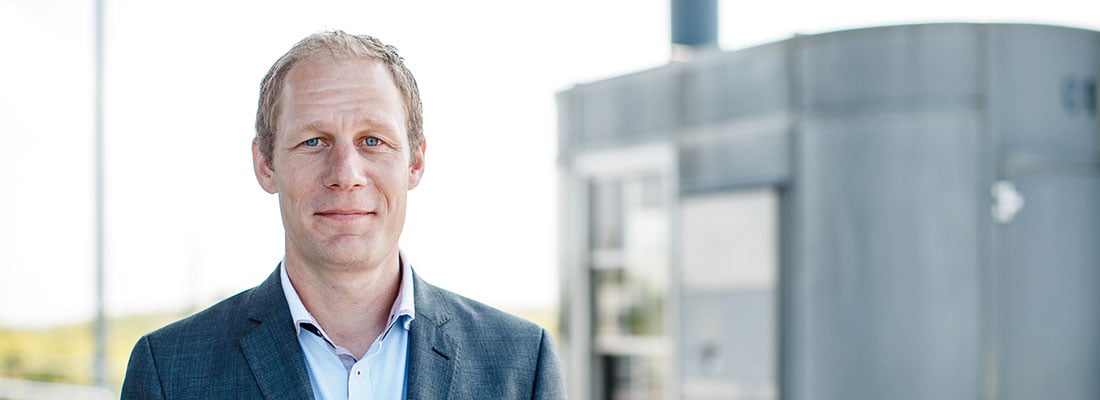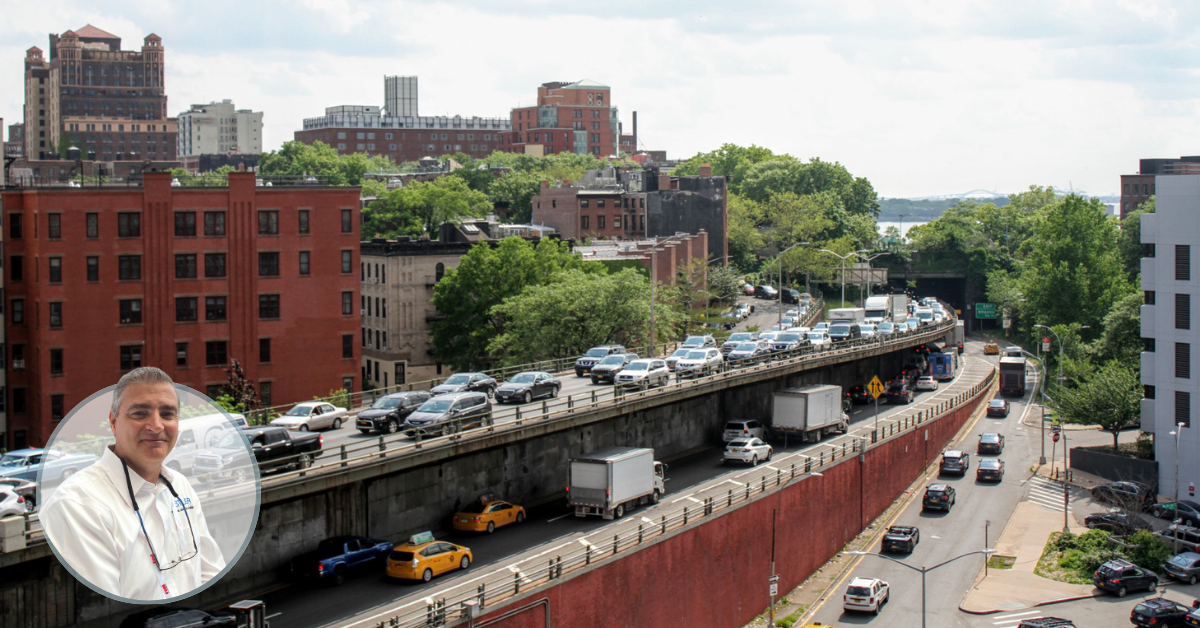Speeding up the mobility transition: David Eskilsson, Edeva
Photo: Peter Brinch of Øresundsbron
“We need to get people to see the positive sides of using other modes of transport but a car.”
- David Eskilsson, Edeva
With the continuous growth of the population and ongoing urbanization there are numerous mobility challenges. Sustainability, safety and societal impact are amongst our daily concerns. We need to speed up the mobility transition to keep up with the fast changing global dynamics, which requires inventive approaches and better solutions. In this series we share inspiring and innovative cases from all over the world. David Eskilsson, CEO of the Swedish company Edeva shares what impact the intelligent speed bump has had so far in Sweden and Australia. How does he speed up the mobility transition?
Eskilsson: ‘I think we have a major challenge to face when it comes to our environment. We do not have a lot of time to reach the goal to keep the increase in global average temperature below 2 °C, we need to act now. The current modes of transporting ourselves and our goods contribute a lot to the problem and a quick transition to sustainable modes of transport is one necessary piece to solve the puzzle.’
‘In the light of the global Corona virus pandemic we’ve all learned the concept of Flattening The Curve. This is transferrable to the environmental challenges we are still facing. The environment has, understandably, not been the point of focus during the pandemic but we need to flatten that curve as well.’
‘The biggest challenge to get the transportation sector to decrease its environmental impact in my opinion is to break mobility behavioural patterns. To get people to experience and see the positive sides of using public transport, bike and walk instead of using a car. It will take a lot of political braveness and investments before the result comes. COVID-19 has impact for sure; either speed things up because we know we can walk or cycle to work or slow things down because we prefer to take the car over public transport.’
‘In Sweden buses have been running as usual.’
‘Sweden has had different tactics compared to most other countries during the still ongoing pandemic. People have been asked to follow the recommendations of the Public Health Authority: keep 1,5-2 m distance, do not go out if you have the tiniest of symptoms, wash hands, work from home, etc. No government lockdown. So buses have been running almost as usual and shops, restaurants and bars have been open.’
‘As a consequence, some businesses have been able to go on almost unaffected, some have had to decrease personnel numbers temporarily while others have had to declare bankruptcy. Edeva has only been affected by our staff feeling a little ill and working from home. Other than that, we have been able to keep working and delivering to our customers, thankfully.’
‘Since public transport has been running almost as usual, they’ve had to implement a few changes for the safety of the passengers and drivers. Here in Linköping, where we operate, you may no longer enter the bus by the front door and they have tried to limit crowding on buses through asking people that are able to choose a different mode of transport. Unfortunately for the environment that has meant that some people use their cars instead of taking the bus. On the other hand, some people have chosen to bike or walk, which is better for your health. Since a lot of people are either told by their employer or have chosen freely to work from home, crowding on buses has decreased somewhat.’
‘Hopefully people will take the bus again.’
‘Hopefully, the cars that are being used now will be left at home and people will return to taking the bus when we reach some sort of normal state again. I do believe we are reaching a point in the world where the awareness for the environmental issues we are facing actually start to have an impact on people’s choices. We see that more and more people make the conscious choice to bike or walk or take the bus for environmental and personal health reasons. In Sweden we see a lot of families choosing an electric cargo bike over a second car, or even instead of a car. We also see an increase in the use of carpools instead of buying a car. This inspired me and my family too. We have decided not to have that second car and use public transport and bicycles instead. I hope and believe this is spreading all over the world.’
‘Speed bumps can hinder traffic. Thanks to the intelligent speed bump we contribute to road safety, traffic flow and the environment.’
‘Not only in my personal life but also in my work for Edeva, we want to contribute to both road safety and environment at the same time. By the use of smart speed bumps. Speed bumps can cause congestion, hindering traffic. So, we invented an active speed bump that only acts if a driver is speeding. It rewards those who drive at, or below, the speed limit with a level road whereas it reminds those who speed of the speed limit by creating a dent in the road. This results in a continuous flow traffic at a safe speed. This is both better for the environment and better for the accessibility of buses. A comfortable and fast bus ride encourages people to transition from car to bus. The safe speed also encourages active mobility.’
‘If the static speed bumps would be replaced by dynamic ones, it could even shorten the bus ride. An increase in average speed of 1 km/h for one bus route increases the number of trips by 4 %, according to one study made in Sweden by the bus company Nobina. If we can help increase average speed of buses while still creating a safe traffic situation for vulnerable road users crossing the road, then we’ve done our part.’
‘To monitor and control the Actibump remotely we have developed a software platform, EdevaLive. This has helped us to create a robust system that needs minimal maintenance. The platform collects, stores and visualizes data from each Actibump. This showed us that the 85-th percentile speed decreases to the speed limit ±3-4 km/h, regardless of previous speed. On every single Actibump. During the pandemic, we have also been able to see how traffic has decreased on all Actibumps in Sweden.’
'The numbers also clearly show that the speed distribution is not disturbed by the Actibump. For a continuous traffic flow, it is important that as many vehicles as possible drive at the same speed. For optimal traffic safety they should also drive on the correct side of the speed limit. The data collected from the Actibumps show that this is the case:

‘The Actibump can either be an expensive speed bump or a very cost-effective traffic solution.’
‘The data show us positive results. However, this did not all go without any hurdles. We had some challenges to face. Our customers are mainly within the public sector. Their processes tend to be long and the demand of reference time and results are high. Introducing a new system into a conservative business takes time. The Actibump system is not just a speed bump; it is also an advanced traffic system. One of our challenges is to position the system both in relation to the geographical sites and, equally important, to position it correctly within the customer’s budget. The Actibump can either be an expensive speed bump or a very cost-effective traffic solution.’
‘In the end, we help increase road safety. The feeling that a crossing is safe is very important for parents when choosing to let their children walk or cycle to school and other activities. We have many customers with crossings where people complained about the safety. When they installed the Actibump these complaints stopped. We improve road safety and at the same time improve travel time and comfort for bus rides. We hope that those who started to walk or bike during the Covid-19 outbreak felt safe doing so and that they will continue to walk and bike.’
‘Saving lives, promoting public transport and active mobility at the same time, drives me.’
‘The Actibump both saves lives and promotes public transport and active mobility; this is what drives me. Being part of the important work for a more sustainable future is very rewarding. My background is in mechanics. When I got the opportunity to start at Edeva and drive the Actibump from invention and demo to a finished product and roll it out all over the world, I didn’t hesitate.
‘So far, we have seven Actibumps installed in Perth, Australia and there will be installations this summer in Bergen in Norway, Alkmaar in The Netherlands and one city in France (not yet official but the system has been delivered). The Swedish government has increased funding for infrastructure projects as one of the many ways of stimulating the economy and keeping up employment in the wake of the pandemic. We hope that other governments will do the same. An increase in traffic safety and a promotion for the use of public transport would take us a bit closer to both the goal of the Paris Agreement and the target of reducing road traffic fatalities and injuries by half – as reiterated in the Stockholm declaration from the Third Global Ministerial Conference on Road Safety.’
Share your story
Do you have an innovation, research results or an other interesting topic you would like to share with the professionals in the infrastructure, traffic management, safety, smart mobility and parking industry? The Intertraffic website and social media channels are a great platform to showcase your stories!
Please contact our Sr Brand Marketing Manager Carola Jansen-Young.
Are you an Intertraffic exhibitor?
Make sure you add your latest press releases to your Company Profile in the Exhibitor Portal for free exposure.
Get up to speed on the mobility industry - our newsletter straight to your inbox!







